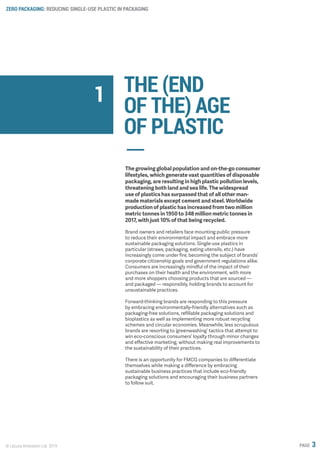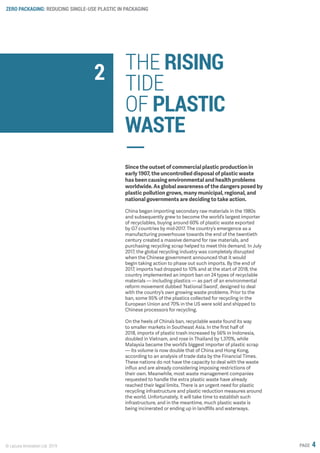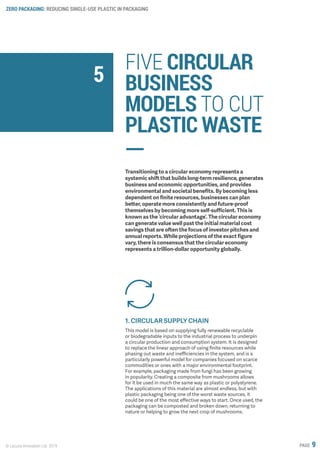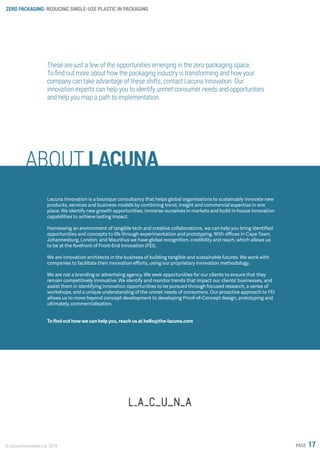This document discusses reducing single-use plastic in packaging. It outlines the rising issue of plastic waste pollution and consumers' growing concerns about plastic packaging. It then presents several circular business models for cutting plastic waste, such as using renewable and recyclable materials, designing for disassembly and recycling, and creating fungal packaging that can be composted. The goal is for companies to transition to more sustainable practices and a circular economy approach to address plastic waste.
















